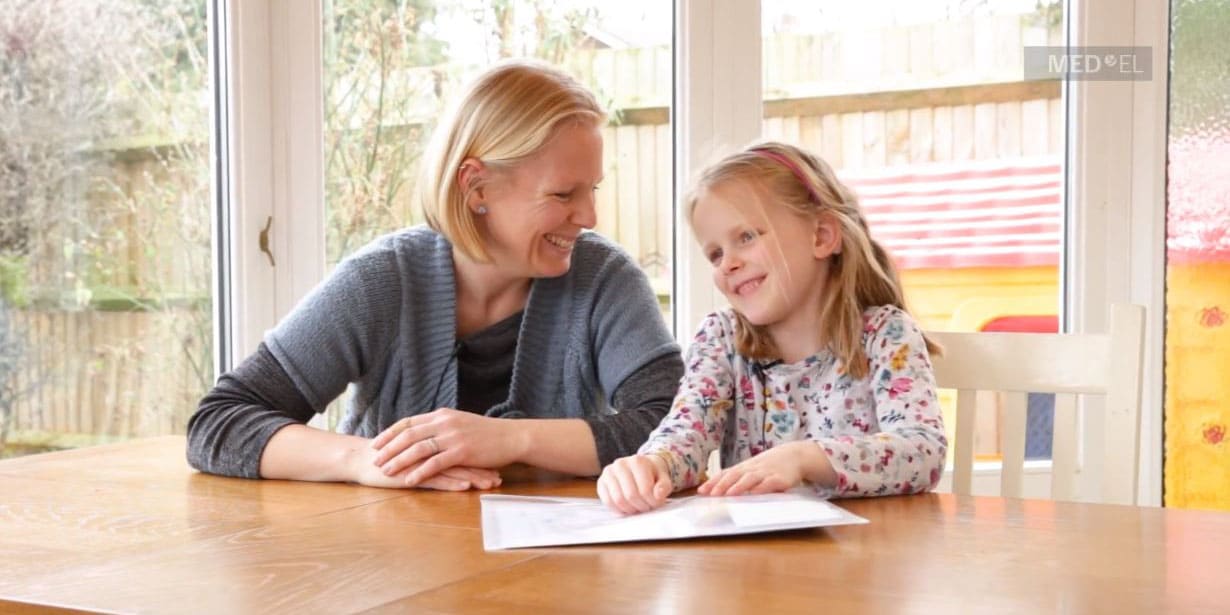MED-EL
Published Feb 06, 2019
Rehab At Home: How Can I Teach My Child About Thoughts And Feelings?

Parents of children with hearing loss are more likely to focus on teaching their child ‘concrete’ language—for example objects, actions, colors and numbers. Parents are likely to use less ‘abstract’ language. This includes things you can’t pick up or see such as thoughts, ideas, feelings and perspectives, as these may be perceived as being too difficult for the child.
Today’s Rehab At Home post is about how you can teach your child language about thoughts and feelings, in a fun and easy way.
Why Should I Teach My Child About Thoughts And Feelings?
Children learn many words through overhearing the more complex conversations that are going on around them. Children with a hearing loss may not overhear these conversations as well as typically hearing children. This means they may miss more complex words, especially those for abstract concepts such as thoughts, ideas and perspectives. It is important to add this type of enriched language to meaningful situations with your child as often as possible. This language is also known as ‘mental state words’—the words that describe what’s going on in someone’s mind. You can use ‘mental state words’ when talking to your children to help them to understand and use these words later. It will also help your child to develop their social skills.
How Should I Teach My Child About Thoughts And Feelings?
In today’s video, Jessica’s mum will demonstrate how to add language about thoughts and feelings while playing a board game. When playing games at home with your child, add ‘mental state words’, such as ‘hope’, ‘prefer’, ‘guess’, ‘think’ and ‘wonder’.
You can download this board game below, but of course you can use these techniques with any card or board games you already have at home.
Download the “Fierce Animal” board game by clicking here.
Here are some other ways to teach your child thoughts and feelings during your day.
What Activities Can We Do With Younger Children?
- Talk about preferences while choosing items (for example clothes, snacks, colors and toys) to teach words such as ‘like’, ‘think’, ‘wonder’: “I like cheese”, “I think your Dad’s favorite color is green”, “I wonder what your brother would like to eat?”.
- Talk about your own feelings, your child’s feelings, and those of other people or characters throughout the day. Remember to explain why you feel that way. “You look very excited to be eating an ice cream”, “She looks scared because she can’t find her mummy”.
What Activities Can We Do With Older Children?
- While reading stories together make predictions about what you think may happen next, for example “I think the giant will knock down the house because he looks furious!”
- Use advanced emotion words to label your own feelings, those of other people or characters. These could include emotion words such as: ‘frustrated’, ‘worried’, ‘annoyed’, ‘miserable’, or ‘overwhelmed’. Remember to explain why you or others may feel that way too.
Interested in more from Rehab At Home? Check out all the videos on our Rehab At Home intro page.
Jessica’s mother is also a volunteer HearPeers Mentor. To chat with her about your hearing experiences and their life as parent of children with an implant visit the HearPeers website.
Have you heard about SONNET 2? Discover how our latest cochlear implant audio processor is made for your child.
Find out more about how cochlear implants work and how they could help you or your child.
MED-EL
Was this article helpful?
Thanks for your feedback.
Sign up for newsletter below for more.
Thanks for your feedback.
Please leave your message below.
Thanks for your message. We will reply as soon as possible.
Send us a message
Field is required
John Doe
Field is required
name@mail.com
Field is required
What do you think?
MED-EL


